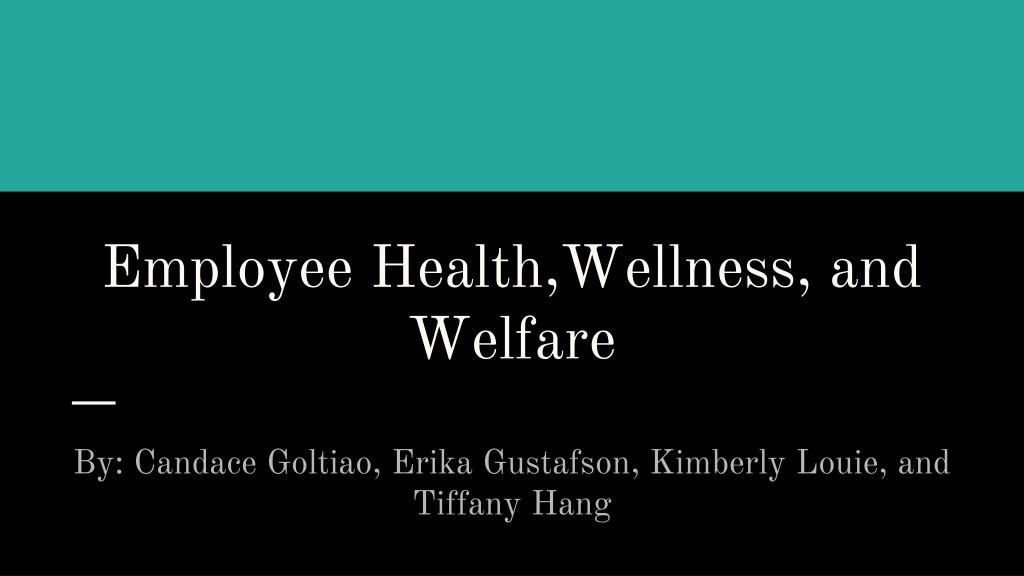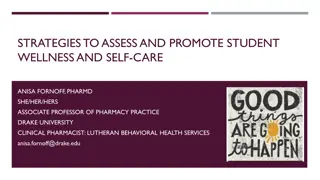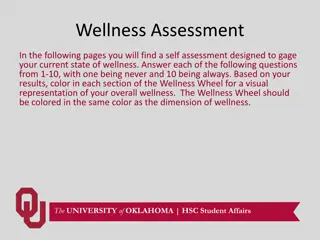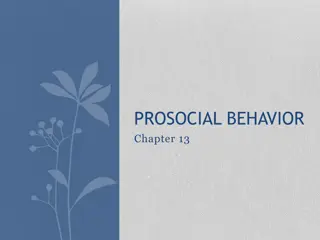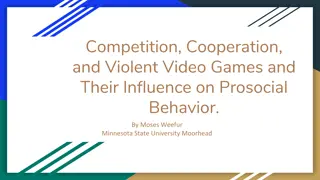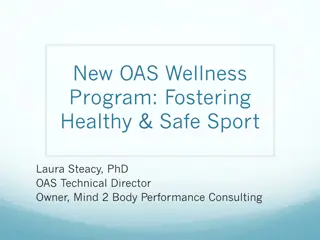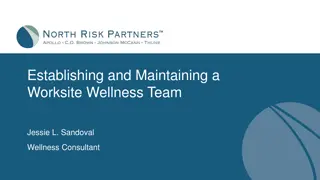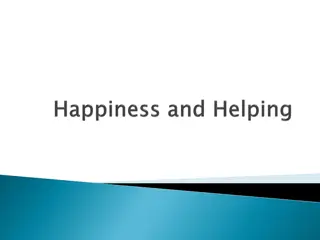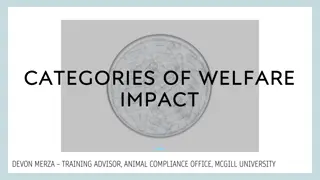Employee Health, Wellness, and Welfare Study: The Impact of Prosocial Behavior on Positive Affect
This study explores the connection between employees' perceived prosocial impact at work and their positive affect at home. By analyzing data collected from firefighters and rescue workers, the researchers found that positive work reflection and perceived competence play a crucial role in influencing activated and deactivated positive affect. The study emphasizes the importance of supervisors supporting employees' well-being and fostering a positive work environment through conscious efforts and training programs.
Uploaded on Oct 01, 2024 | 0 Views
Download Presentation

Please find below an Image/Link to download the presentation.
The content on the website is provided AS IS for your information and personal use only. It may not be sold, licensed, or shared on other websites without obtaining consent from the author. Download presentation by click this link. If you encounter any issues during the download, it is possible that the publisher has removed the file from their server.
E N D
Presentation Transcript
Employee Health,Wellness, and Welfare By: Candace Goltiao, Erika Gustafson, Kimberly Louie, and Tiffany Hang
Doing Good at Work Feels Good at Home, but Not Right Away By: Candace Goltiao
FOCUS Examine the association between perceived prosocial impact at work and positive affect at home.
KEY TERMS Perceived Prosocial Impact: Perception that one s actions at work are beneficial to others Perceived Competence: Judgment of oneself as capable of acting effectively Positive Work Reflection: Contemplating the favorable features of one s job
KEY TERMS Positive Affect: Refers to an individual s pleasant emotional state Activated Positive Affect: Corresponds to feelings of being active, energetic, excited Deactivated Positive Affect: Corresponds to feelings of calmness, relief
METHOD AND MEASURES SAMPLE: 68 firefighters and rescue workers 2 surveys per day (over span of 1 working week) 1st survey after-work, 2nd survey at bedtime MEASURE: Scale 1 = Fully Disagree 5 = Fully Agree
Assessed at End of Workday Assessed at Bedtime Positive Work Reflection Activated Positive Affect at End of Workday Activated Positive Affect at Bedtime Perceived Prosocial Impact Deactivated Positive Affect at End of Workday Deactivated Positive Affect at Bedtime Perceived Competence
TAKE-HOME MESSAGE Supervisors should make more of a conscious effort to help remind employees of their impact at work On stressful days take the time to talk with employees Encourage team members to support each other
TAKE-HOME MESSAGE Increase employee awareness through training/coaching programs 1 week training 3 weeks of recording in journal Compensated
How Important are Work-Family Support Policies? By: Erika Gustafson
FOCUS Examine the importance of work-family support policies and their effects on employees outcomes
KEY TERMS Work-Family Support Policies Family-Supportive Organization Perceptions (FSOP) Work-to-Family Conflict
METHOD AND MEASURES Sample: Published and unpublished articles, papers, technical reports Results in 343 possible related studies to analyze
METHOD AND MEASURES Measuring: Quantitative review of relationship between work-family support policies and attitude How work attitude is affected by having and using policy availability and use when there are multiple policies
TAKE-HOME MESSAGE Companies should evaluate current program offerings Increase extent to which employees know about programs and perceive it for their benefits Wellness rooms, increased resources for dependent care, open enrollment, internal company newsletter Improve impact of programs in place through internal publicity campaigns and testimonials
How Workplace Emotional Labor Harms Employee Home Life By: Kimberly Louie
FOCUS How emotional labor changes the home domain How surface acting correlates to work-to-family conflicts
KEY TERMS Emotional labor Surface Acting State anxiety Emotional exhaustion
METHODS Sample: 78 bus drivers 3 surveys (over span of 2 weeks) Scale of: 1=very slightly or not at all 5=very much
MEASURES Surface Acting State Anxiety Work-to-Family Conflict Emotional Exhaustion
State Anxiety Insomni a Emotional Exhaustion Surface Acting Work-to-family conflict
TAKE-HOME MESSAGE Approved standards and norms for the company Managers need a meeting to set standards of employees. Compensation and Benefits Package PTO
Job Burnout and Depression By: Tiffany Hang
FOCUS Examine if job burnout and depression correlate with one another and if physical activity can help reduce or eliminate job burnout and depression .
KEY TERMS Job Burnout: long-term process that develops as a result of prolonged exposure to excessive stressors at the workplace Depression: a mental condition characterized by the feeling of guilt, inadequacy, lack of motivation, accompanied by loss of energy and appetite Physical Activity (PA) Time 1, Time 2, Time 3 (T1, T2, T3)
STUDY 1,632 Employes 70% Men and 32% had managerial positions 3 different measurements 3 different time periods (T1, T2, T3)
MEASURES Shirom-Melamed Burnout Physical Fatigue Cognitive Weariness Emotional Exhaustion Personal Health Questionnaires List of eight symptoms of depression Rate question from 1-4 American College of Sports Medicine and American Heart
RESULTS No correlation between job burnout and depression PA may work as a distraction mechanism Engaging in PA can help reduce stress or eliminate stressful situations
TAKE-HOME MESSAGE Managers should promote PA to help reduce job burnout and depression Outdoor team building exercise Build on site gyms Offer discounted gym memberships Reimbursement if employee s take PA classes
GROUP TAKE-HOME MESSAGE - Promote work-life programs Increase awareness through employee newsletters/ e-mails - Increase manager awareness/ improve employee relations Send managers to retreats to identify behavioral changes of an employee
